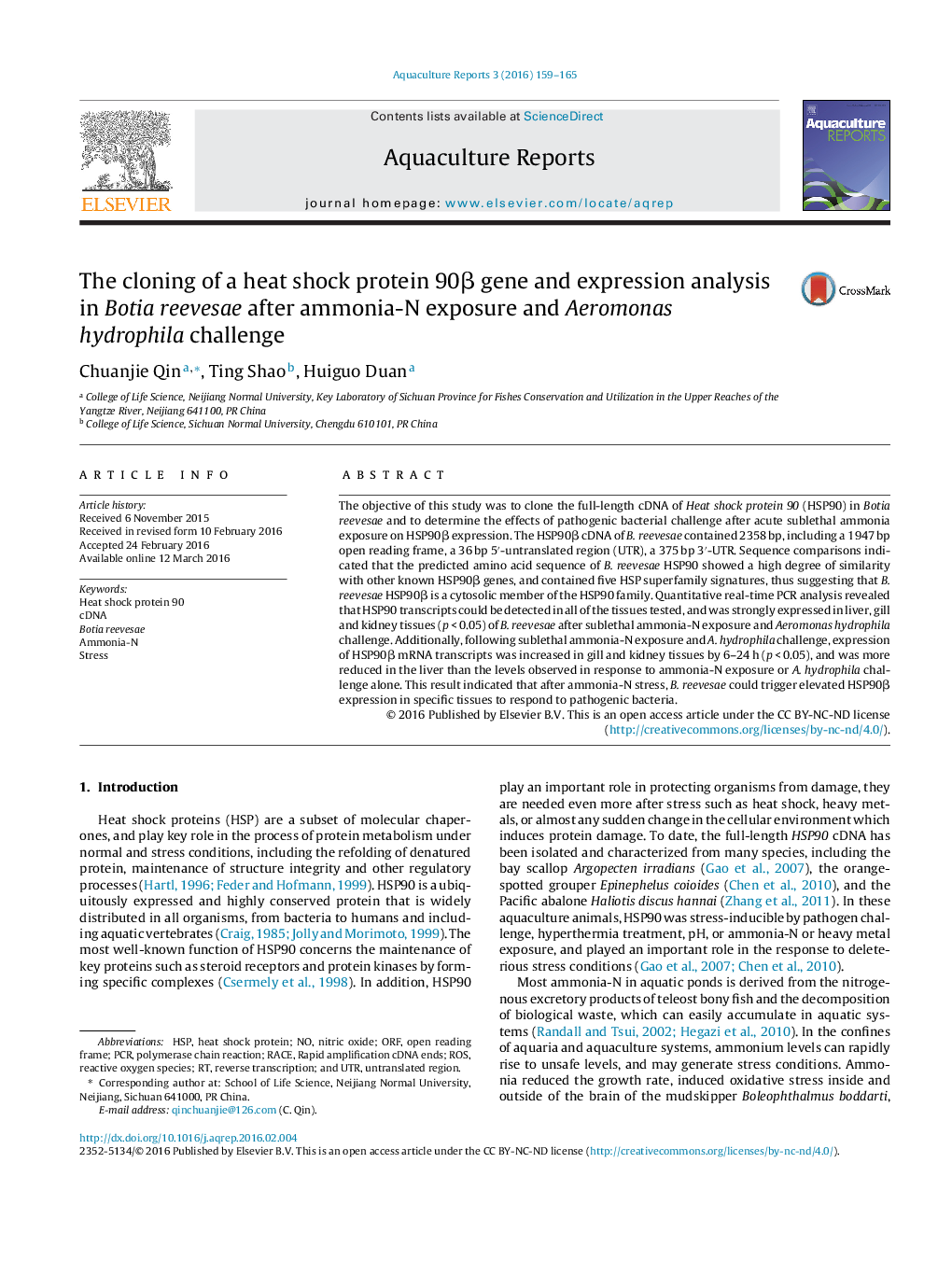| کد مقاله | کد نشریه | سال انتشار | مقاله انگلیسی | نسخه تمام متن |
|---|---|---|---|---|
| 4438012 | 1620277 | 2016 | 7 صفحه PDF | دانلود رایگان |

• The HSP90β cDNA of B. reevesae consists 2583 bp. An ORF of 1947 bp encodes for a protein of 649 amino acids with five HSP superfamily signatures.
• HSP90 mRNA was mainly expressed in liver, gill and kidney.
• Sublethal ammonia-N or Aeromonas hydrophila induced HSP 90 mRNA expression.
• A. hydrophila challenge after ammonia-N exposure, HSP90 increased in gill and kidney tissues, and reduced in the liver than that of treatment alone.
The objective of this study was to clone the full-length cDNA of Heat shock protein 90 (HSP90) in Botia reevesae and to determine the effects of pathogenic bacterial challenge after acute sublethal ammonia exposure on HSP90β expression. The HSP90β cDNA of B. reevesae contained 2358 bp, including a 1947 bp open reading frame, a 36 bp 5′-untranslated region (UTR), a 375 bp 3′-UTR. Sequence comparisons indicated that the predicted amino acid sequence of B. reevesae HSP90 showed a high degree of similarity with other known HSP90β genes, and contained five HSP superfamily signatures, thus suggesting that B. reevesae HSP90β is a cytosolic member of the HSP90 family. Quantitative real-time PCR analysis revealed that HSP90 transcripts could be detected in all of the tissues tested, and was strongly expressed in liver, gill and kidney tissues (p < 0.05) of B. reevesae after sublethal ammonia-N exposure and Aeromonas hydrophila challenge. Additionally, following sublethal ammonia-N exposure and A. hydrophila challenge, expression of HSP90β mRNA transcripts was increased in gill and kidney tissues by 6–24 h (p < 0.05), and was more reduced in the liver than the levels observed in response to ammonia-N exposure or A. hydrophila challenge alone. This result indicated that after ammonia-N stress, B. reevesae could trigger elevated HSP90β expression in specific tissues to respond to pathogenic bacteria.
Journal: Aquaculture Reports - Volume 3, May 2016, Pages 159–165